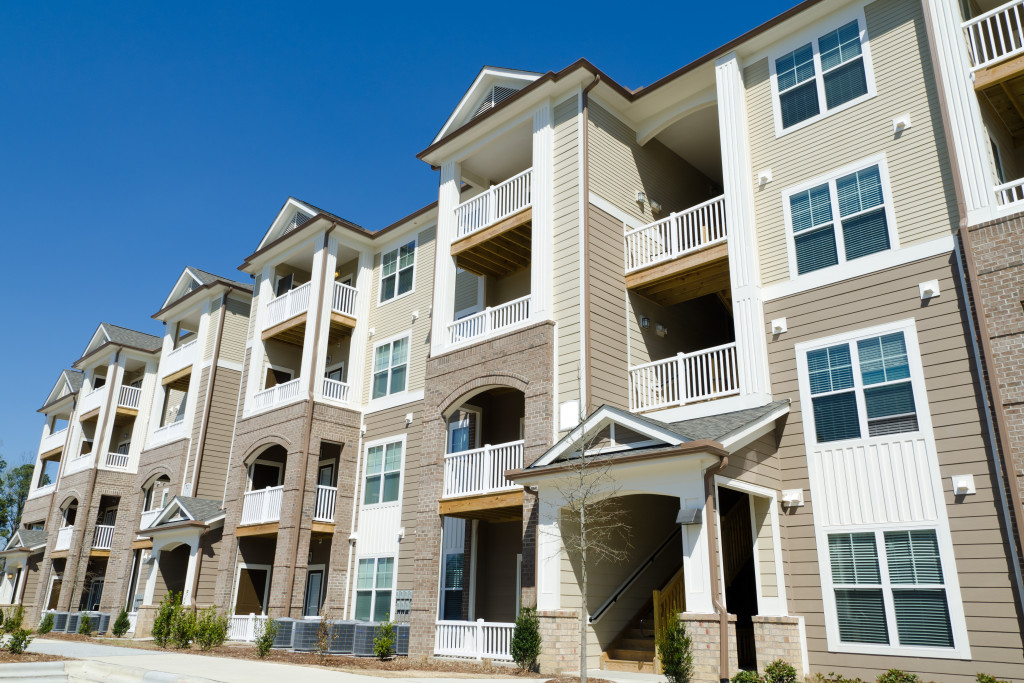- Consider refinancing your mortgage to reduce interest payments and total loan amount so you don’t have to pay more.
- Look for foreclosures or bank-owned properties, which can offer lower prices in comparison to other investments.
- Buy a fixer-upper property and do some of the renovations yourself to save money while maintaining control.
- Research areas with potential for price appreciation over time to get the most out of your investment.
Buying a residential rental property can be a great way to build wealth over time. But it is essential to understand the costs associated with buying and owning such an investment to ensure you get the best return. Taking steps like these to ensure you get the most out of your purchase while saving money in the long run.
Consider mortgage refinancing.
Considering mortgage refinancing to cut costs when buying a residential rental property is an important decision that should not be taken lightly. Refinancing a mortgage is replacing an existing loan with a new one, generally at a lower interest rate and different terms. Doing so can bring down the amount of interest due and the total amount owed overtime on a loan.
When purchasing residential rental properties, homeowners may take advantage of this process by refinancing their mortgages; this puts more money in their pockets as income from the rental property offsets the debt service from the loan. Although it may not always be feasible, doing so could save thousands of dollars over the life of a mortgage and make an investment in real estate more worthwhile.
Consider buying in a lower-cost area.
Buying in a lower-cost area can help reduce the cost of purchasing a rental property. Here are some tips on how to do so:
Look for foreclosures or bank-owned properties.

Foreclosures occur when the owner can no longer make mortgage payments, and the property is taken by the lender who now owns it. Bank-owned properties have been seized by the lender, who then lists them on the open market. Investing in these properties can be an excellent opportunity as they typically provide lower prices than other investments.
The key to successfully acquiring a foreclosure or bank-owned property is to research local markets thoroughly and act quickly to secure any offers. It is also important to understand all regulations and considerations, such as if repairs will be necessary after purchase or if unpaid taxes could apply to the sale, before committing to any investment. An investor with this knowledge stands a greater chance of securing these types of real estate while maintaining a budget focused on their bottom line.
Buy a fixer-upper property.
For starters, fixer-uppers cost significantly less than buying a turnkey rental property ready to generate income as soon as it’s acquired. By doing some of the renovations yourself, renters can not only save money but also have control over how their investment looks. Furthermore, taking the DIY route lets investors decide what amenities they include and choose from various finishes and fixtures based on the quality they want to offer in their building.
While projects like these take more time upfront and require certain skill sets, they can significantly reduce costs associated with purchasing a fully renovated residential property while offering guaranteed appreciation in value when done optimally.
Do research.
When purchasing a new residential rental property, it’s important to do adequate research to determine which area has the most potential for price appreciation. This is significant because when buyers understand which areas are poised for growth, they can make investments that will appreciate over time, helping them save money and making their ventures more profitable.
The best research method for price appreciation involves looking at market trends in the area where you are considering buying real estate. It’s also important to read local real estate news articles to understand how the area’s economy is faring, as this can be a huge indicator of long-term value appreciation. Lastly, having an experienced local realtor specializing in that area is also a great asset as they should have an extensive knowledge of current trends and issues impacting local home values.
Get multiple quotes.
It’s important to get multiple quotes to compare prices, helping you to make informed decisions about what projects you can and should undertake on the property. Before hiring any contractor for a renovation project, getting a detailed quote that includes the cost of labor and materials is the best practice.
Doing so allows you to compare prices between different contractors to find the one that offers the most competitive rates for the quality of work. Additionally, having more than one quote ensures you’ll have options if one contractor can’t do a particular job or charges too much.
Take advantage of tax incentives.

Tax incentives associated with owning rental properties can benefit landlords, saving them money on their overhead costs. One of the main tax incentives available is depreciation deductions. This is a method by which expenses can be deducted from income when taking out a loan to buy a residential rental property.
As depreciation accumulates over time, it reduces the overall cost of ownership, offering landlords additional revenue in the form of deductions. This can be especially helpful for those just starting to buy rentals, as these deductions can help offset the start-up costs and increase profitability quickly outside standard tenant income streams.
These are just a few of the ways to reduce costs when buying and owning residential rental properties. Armed with the proper knowledge, guidance, and strategies, investors can save money and create a lasting financial portfolio through real estate investments.

